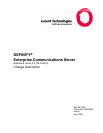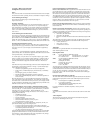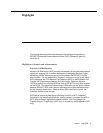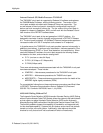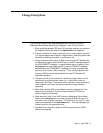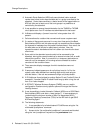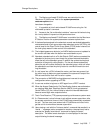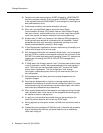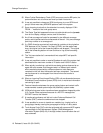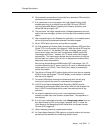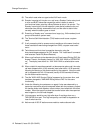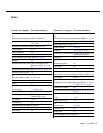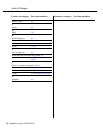
Change Descriptions
Issue 1 July 2000 11
70. Calls queued to an attendant via direct dial to an attendant VDN were left in
queue and could not be answered.
71. If all preferences of a routing pattern with Look Ahead Routing (LAR)
enabled were busy for a data call over an ISDN PRI trunk, DEFINITY
returned Cause #58 (Bearer Capability Not Presently Available), and
Cause #58 did not trigger LAR.
72. The command “list bridge” aborted when a bridged appearance was on a
station that was unmerged, and then its former port was reused by another
station.
73. After unregistering from the Roadwarrior application, an immediate phone
call on the previously associated extension would be dropped.
74. Not all TN793 ports returned to service after an upgrade.
75. For G3si systems with Duplex Switch Processing Element (SPE) and Tone
Clocks (TC) in the Processor Port Network, if both the active SPE and the
TC were in carrier “A”, the standby SPE was in standby mode, and “A”
carrier power supply was lost, then a spontaneous WARM restart SPE
interchange would occur. However, the TC would not be interchanged
automatically. The interchange required manual intervention to bring the
dial tone back (or a wait of up to an hour for background maintenance to
detect and correct the problem).
Now, during the spontaneous WARM restart SPE interchange, if the TC
must be switched to the “B” carrier, then the “B” carrier is selected and the
system performs a COLD2 (“Tone Clock Loss”) restart to automatically
correct the problem.
76. The Advice-of-Charge (AOC) station display did not clear after an outgoing
ISDN trunk call was dropped. The AOC display is now cleared 10 seconds
after the call is dropped.
77. On certain ISDN offnet coverage and forwarding calls, the call rang
continuously and did not return to a subsequent coverage point.
78. H.323 IP trunk Station Message Detail Recording (SMDR) records
indicated that calls dropped locally even when the trunk side dropped first.
Also, H.323 IP trunks dropped slowly under timer-expiration/error-log
scenarios.
79. An endpoint registration using a non-Lucent application without an
extension number may have caused a system reset. The registration is
now rejected.
80. If a user had no administered entries in the change node-names form, but
then administered a VDN, and on page 2 pressed “HELP” in either the
Audix Name
or the
Messaging Server Name
fields, the System Access
Terminal (SAT) logged off.
81. Certain displays potentially caused system resets.
82. An Expert Agent Selection (EAS) agent on a physical station with console
permissions was blocked from forwarding another station.



